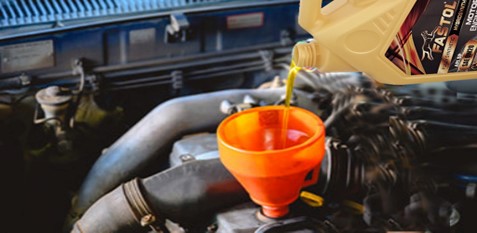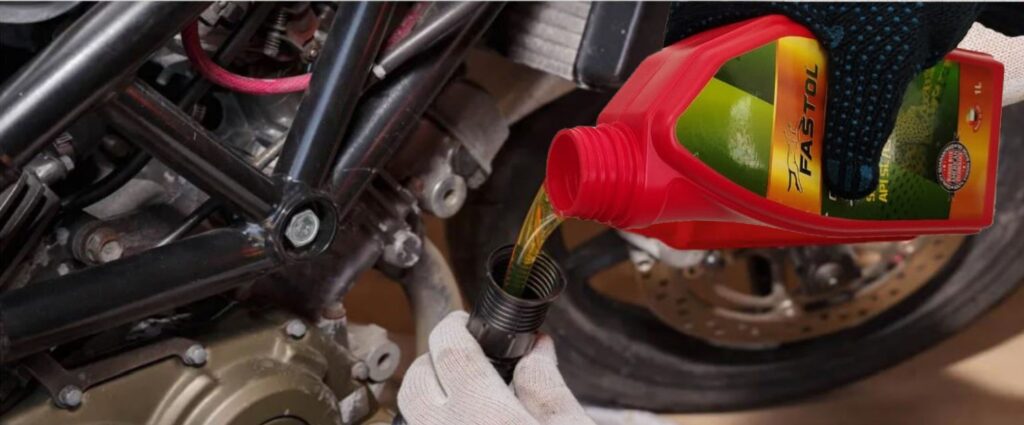Can I use Regular Car Oil in a Motorcycles? It’s an interesting and concerning survey result! Using the correct engine oil is crucial for the proper functioning and longevity of an engine. Motorcycle engine oils and car engine oils, though both serve the same basic purpose of lubrication, have different formulations and characteristics due to the distinct operating conditions of each type of engine. Before you inquire, “Is it okay to use oil on my motorcycle?” or “Can I use car oil in a motorcycle?” You really want to ask yourself if those are the same thing. Are motor oil and motorbike oil interchangeable? Are they constructed similarly, using comparable parts? Undoubtedly, the answer is NO. What Makes Motorcycle Engine Oil Different from Car Engine Oil? 01 Engine Design Differences Motorcycle engines often have smaller, higher-revving designs compared to car engines. They also typically have wet clutches, where the engine oil lubricates not only the engine but also the clutch components. This requires a special oil formulation that can handle the stress and friction of both engine and clutch systems simultaneously. Car engines are designed for longer, more stable operating conditions, with separate systems for the engine and transmission (in many cases). Car engine oil doesn’t need to interact with the clutch, which means it doesn’t require the same blend of additives and viscosity. 2. Additives Motorcycle oils are specially formulated with specific additives to handle the combined lubrication needs of both the engine and the clutch system. They’re designed to reduce the likelihood of clutch slippage, something crucial in wet-clutch systems. Some additives are used to prevent the clutch from grabbing or slipping in extreme conditions. Car oils, on the other hand, generally have a different additive package. These oils are designed to optimize engine performance and minimize engine wear, but they’re not designed to interact with a clutch system. They may have anti-wear additives that are more suited to the steady load and operating conditions of a car engine. 3. Viscosity Motorcycle oils often have different viscosity levels and formulations tailored to the high-RPM, high-heat environments of motorcycles. The oil needs to flow smoothly at high speeds and temperatures without breaking down. It has to maintain stability, even under intense conditions like rapid acceleration or deceleration. Car oils may have different viscosity ratings that are more suited to the continuous operating temperatures of a car engine, which typically doesn’t experience the same extreme fluctuations in temperature and pressure that a motorcycle engine might. 4. Shear Stability Motorcycle oils tend to have higher shear stability because they need to maintain their integrity at higher speeds and pressures (due to the higher RPMs of motorcycle engines). This is crucial to prevent the oil from breaking down prematurely. Car engine oils may not have the same level of shear stability because the operating conditions of a car engine don’t demand it to the same degree. 5. Engine Heat and Load Motorcycle engines are often under more stress due to higher engine speeds, lighter frame designs, and the need to dissipate heat quickly from smaller spaces. This demands an oil that can handle rapid temperature fluctuations. Car engines, being generally larger, often have a more robust cooling system, and thus their oil doesn’t face the same intense stress and heat. What would happen if I used Car engine oil in a motor cycle engine as both require API SL? Using car engine oil in a motorcycle can lead to several issues: Clutch Performance: Motorcycle engine oil is often designed to work with the wet clutch system in motorcycles. Car oils typically aren’t, which could cause the clutch to slip or fail. Viscosity Differences: Motorcycle oils are often formulated with different viscosity levels to handle the higher heat generated by smaller, more compact engines. Car engine oils might not perform as effectively under these conditions. Protection: Motorcycle oils often include additives to protect against wear and corrosion, given the more extreme conditions. Car oils might not be as effective under the increased strain that motorcycles undergo. Engine Wear: Over time, using the wrong type of oil can cause engine wear, reduce performance, and possibly result in engine failure. It’s essential for motorcycle owners to use the recommended motorcycle engine oil to ensure proper lubrication, cooling, and long-term engine health. While it might be tempting to use car oil due to cost or availability, it’s worth investing in the right oil to avoid costly repairs or diminished performance in the long run. Types of Motorcycle Engine Oil Base oil and additives are the two primary components of engine oils. Base oil serves as the foundation for the cooling and lubrication processes, and additives are added to change its characteristics. To accommodate a range of riding styles and engine requirements, we offer three different motorcycle engine oils, each made with a different type of base oil. Mineral engine oil Semi-synthetic engine oil Fully synthetic engine oil Mineral Engine Oil Conventional or ordinary engine oil is another name for mineral engine oil. Refined crude oil produces a variety of products, including mineral base oil. Mineral oil is inexpensive and frequently used in motor oil for automobiles. An excellent choice for motorcycles with small-capacity engines is mineral engine oil. Because they do not require high-end engine fluids, these engines do not impose significant mechanical pressure. Semi Synthetic Engine Oil A mixture of mineral and synthetic oils is known as semi-synthetic engine oil. In terms of performance and quality, it is mediocre. Mineral and synthetic oils are mixed in various proportions to create semi-synthetic motor oil. The price and quality are established based on the ratio. Learn about Japa Energy 4-stroke motorcycle engine oil, which is designed to provide the best possible engine protection, improved performance, and an unforgettable riding experience. Although mineral engine oil lasts less time, it performs well. Many motorcycle riders choose to use mineral engine oil because it is less expensive, and they also replace the oil more regularly. Fully Synthetic Engine Oil



